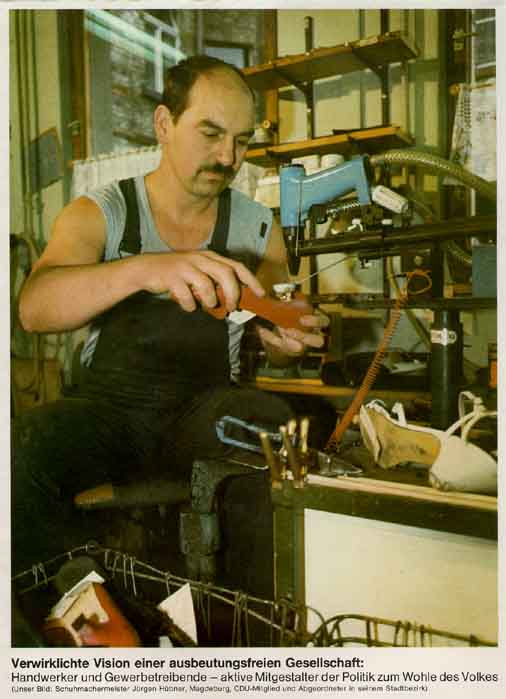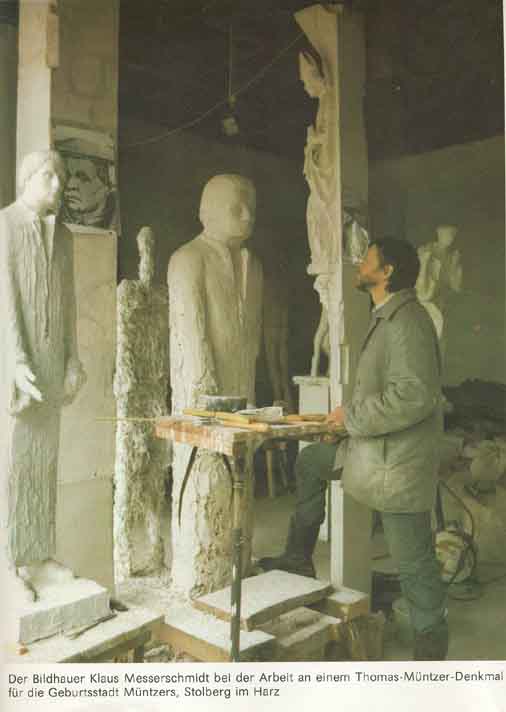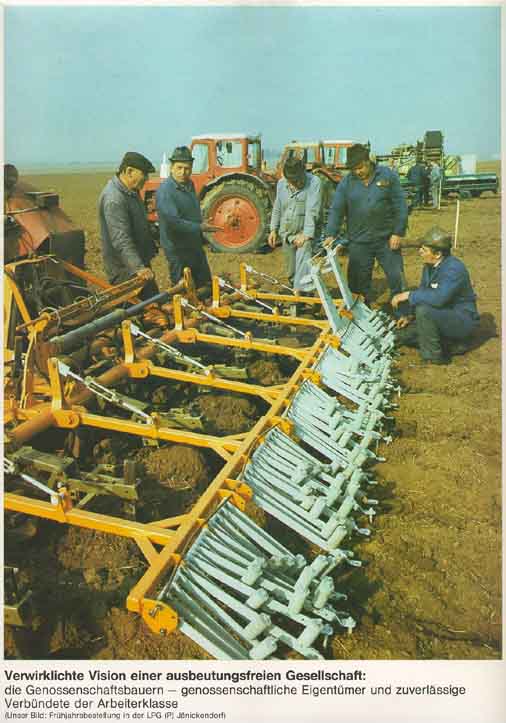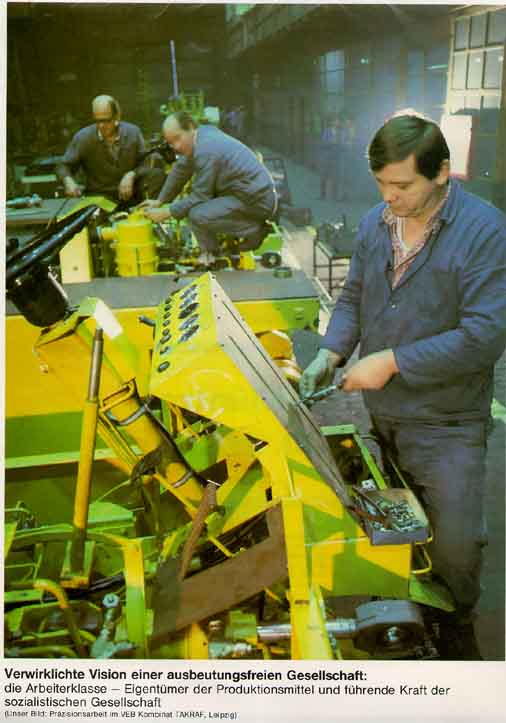Background: The GDR appointed agitators to spread its messages in factories, offices, etc. Often, they maintained Wandzeitungen, essentially bulletin boards or “wall newspapers” that contained propaganda, encouragement, and news. To provide them with material, the Socialist Unity Party (SED) issued a bimonthly publication titled Das aktuelle Bild. This is material on the theme of the 500th anniversary of the birth of Thomas Müntzer. It was in part an effort to appeal to Christians, suggesting their traditions were consistent with socialism. 1993 had seen even more elaborate festivities in honor of Martin Luther.
The material includes the following note to agitators: “Supplement this material by emphasizing the broad democratic participation by the workers in the development of social processes in factories and neighborhoods. That will also help keep your focus on the forthcoming communal elections. You might also pick a school, military unit, farm, or other establishment in your county or town that carries Thomas Müntzer’s name, and thereby is particularly obligated to emphasize his legacy.”
Source: Das aktuelle Bild, 2/1989
East German Material on Thomas Müntzer


Left: A realized vision of an exploitation-free society: The united forces of the National Front working together to strengthen socialism and advance peace.
Center: Many cities in the GDR have memorials to the life and work of Thomas Müntzer, including churches, palaces, castles, city halls, and other buildings.
Left: In museums such as the palace at Bad Frankenhausen, the revolutionary activities of Thomas Müntzer and the early-bourgeois revolution in Germany are honored.
Bottom: His message remains alive.

A realized vision of an exploitation-free society: Tradesmen and craftsmen — active contributors to policies for the benefit of the people.
(Our picture: Master shoemaker Jürgen Hübner, member of the Christian Democratic Union and representative in his city council.





